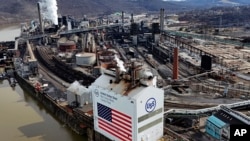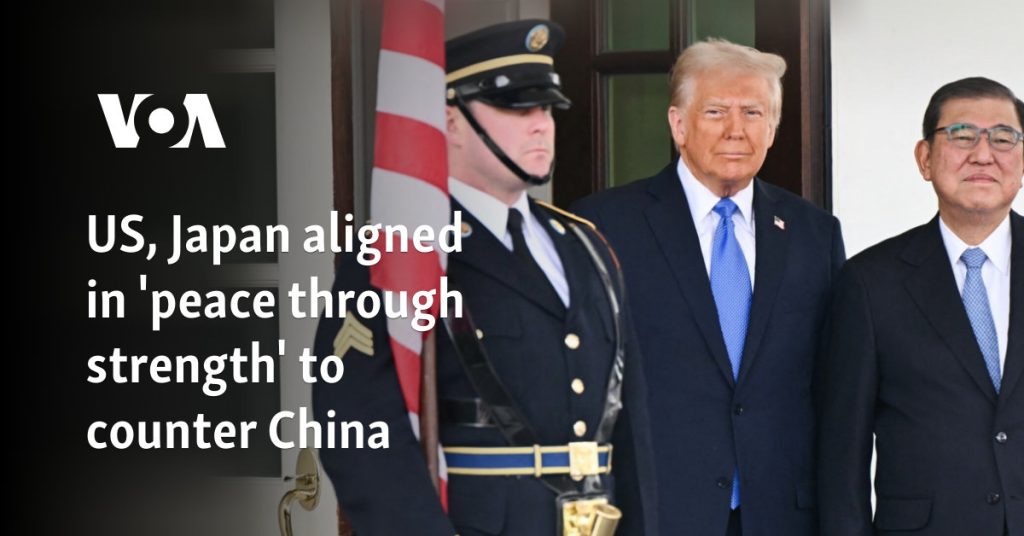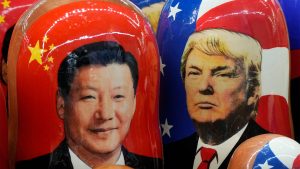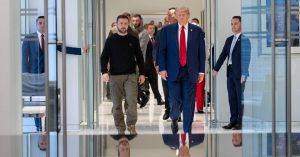After the meeting between U.S. President Donald Trump and Japanese Prime Minister Shigeru Ishiba last week, the two nations voiced alignment on Trump’s “peace through strength” approach toward countering China in the Indo-Pacific region, analysts said.
“The prime minister and I will be working closely together to maintain peace and security — and I also say – peace through strength all over the Indo-Pacific,” said Trump, at a press conference after his meeting Friday with Ishiba in Washington.
“We agreed to cooperate even more closely to combat the Chinese economic aggression, which is quite aggressive,” Trump said.
Ishiba said: “Further strengthening the strong and unwavering Japan-U.S. alliance to achieving a free and open Indo-Pacific” is key “to advance the national interests of both of our countries in synergy and to realize peace and prosperity in the Indo-Pacific.”
Analysts say the first official meeting between Trump and Ishiba succeeded in striking agreements on what both leaders consider crucial: combating China’s aggression and strengthening their national interests.
Security commitment
Ishiba continued to forge close ties with the U.S. to maintain multilateral alliance security cooperation close to home in the Indo-Pacific, while Trump secured Japanese investments and purchases.
Taken together, analysts say, Ishiba is aligned with Trump’s vision of making the U.S. strong at home in his “America First” approach as a prerequisite for maintaining peace through strength in the Indo-Pacific, a region crucial to Japan’s defense.

“The U.S.-Japan leaders’ communiqué went a long way to reaffirm Trump’s peace through strength approach to the Indo-Pacific,” said Kenneth Weinstein, the Japan chair at Hudson Institute.
“The U.S.-Japan leaders’ communiqué, which President Trump signed off on, highlighted the importance of multilateral networks in the Indo-Pacific,” Weinstein told VOA on Sunday.
“The two leaders intend to advance multilayered and aligned cooperation” with the Quad security dialogue and three separate trilateral ties with South Korea, Australia and the Philippines “to realize a free and open Indo-Pacific,” Trump and Ishiba said in a joint statement.
There were concerns by some that Trump would not support alliance security formations aimed at maintaining peace and security in the region.
“A big concern on the part of the Japanese” was whether the Biden administration’s emphasis “on the centrality of alliance” or the “so-called multilayered structures” or “mini laterals” would continue, said Daniel Sneider, a lecturer in East Asian Studies at Stanford University.
Sneider told VOA on Monday, “It was reassuring for the Japanese and for those in the U.S. who are worried whether those types of policies would have continuity that there was at least a written affirmation of those things in the joint statement.”
In their joint statement, Trump and Ishiba also expressed “strong opposition” to China’s attempts to change the status quo in the East China Sea and its unlawful maritime claims in the South China Sea.
They also expressed support for Taiwan’s “meaningful participation in international organizations” and opposed China’s efforts to disturb stability across the Taiwan Strait.
At a press briefing held in Beijing on Monday, Chinese Foreign Ministry Spokesperson Guo Jiakun, said, “The part of the U.S.-Japan joint statement on China constitutes open interference in China’s domestic affairs and an attack and smear against China, which is also aimed at scaremongering in the region.”
Increased investment
Trump announced at the press conference that Japan will invest $1 trillion in the U.S., participate in the Alaska LNG project, and invest in, rather than buy, U.S. Steel.

In one of the first executive orders Trump signed on Jan. 20, he made Alaskan natural resources open to development and production and its liquefied natural gas available for sale to U.S. allied nations within the Pacific region.
Ishiba said, “An unprecedented investment” from Japan to the U.S. and the Japanese investments in U.S. Steel are “mutually beneficial” and “contribute not only to the United States and Japan but also to the whole world.”
Weinstein, at Hudson, said, “The announcement of a trillion dollars in foreign investment in the U.S. was the landmark moment, as was the announcement of the investments in the LNG sector” and “the pending U.S. Steel investment.”
“Ishiba is supporting what is in Japan’s best interest: an alliance with minimal distance between the U.S. and Japan,” he said. “So he understands he needs to back the America First approach to continue alignment with the Trump administration. A strong America is the best guarantee for global peace and stability.”
In explaining what foreign policy would look like under the Trump administration, Secretary of State Marco Rubio, during his confirmation hearing in January, emphasized “a foreign policy centered on our national interest” and making the U.S. strong first at home as the prerequisite for maintaining peace and security around the world.
“Ishiba respects Trump’s America First” policy, but he is also a “Japan first” prime minister, said Yuki Tatsumi, director of the Japan Program at the Stimson Center.
She told VOA on Friday that “both leaders gained. Trump got a commitment of increased investment by Japan in the U.S., while Ishiba gained Trump’s articulation of the U.S. commitment to the defense of Japanese territory, including the Senkaku Islands, and the joint statement in which U.S.-Japan support for Taiwan was articulated.”
In the joint statement, Ishiba and Trump underscored the United States’ “unwavering commitment” to defending Japan using its full range of capabilities, including nuclear capabilities. The two also “reiterated their strong opposition to any action that seeks to undermine Japan’s long and peaceful administration of the Senkaku Islands.”
There is “continuity” from the Biden administration to the Trump administration, Tatsumi said, and that is to make U.S.-Japan ties “the hub of alliance cooperation and partnership across the Indo-Pacific.”








